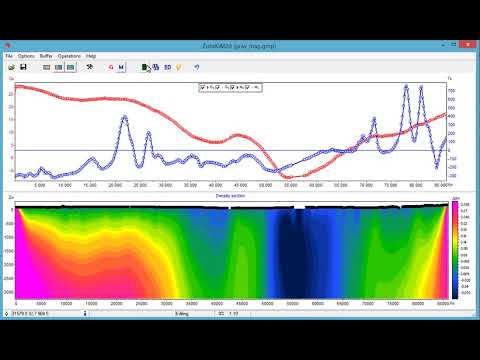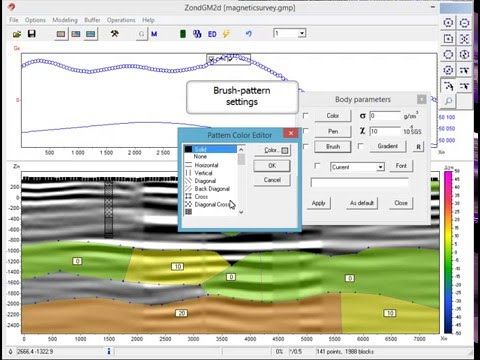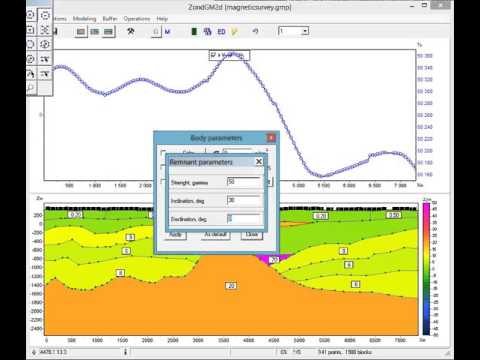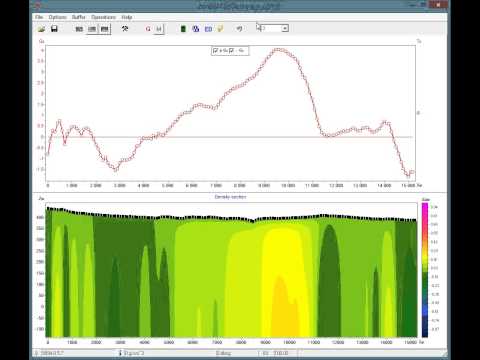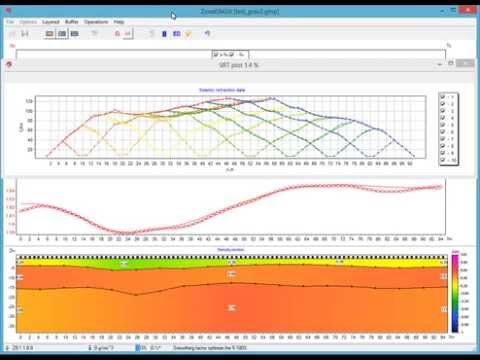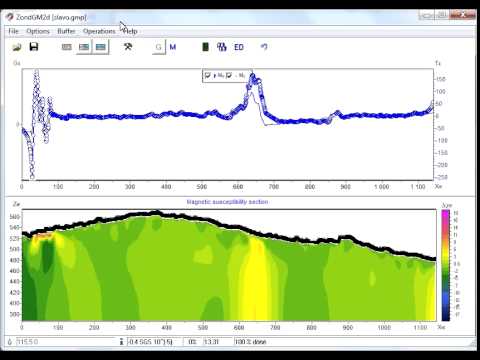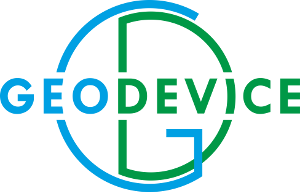ZondGM2D — Nouveau produit pour l'interprétation gravimétrique et magnétique 2D
ZondGM2D est un nouveau logiciel pour les levés gravimétriques et magnétiques 2D, combinant les fonctionnalités de ses prédécesseurs ZondMag2D et ZondPGM. Le programme est conçu pour l'interprétation multiprofil bidimensionnelle des données gravimétriques et magnétiques terrestres, en forage et aériennes.
ZondGM2D offre une solution prête pour l'interprétation des données de levés gravimétriques et magnétiques, et présente un large éventail d'outils, allant de la modélisation mathématique à l'interprétation des données de terrain. Une interface conviviale et de vastes possibilités de visualisation sont les clés pour résoudre efficacement les tâches géologiques.
Contrairement à ses prédécesseurs, ZondGM2D propose trois types de modèles :
- Modèle divisé en une grille régulière de cellules Ce type est particulièrement utile pour résoudre le problème inverse (récupération automatique de la densité ou de la susceptibilité magnétique). Les résultats de l'inversion constituent un bon point de départ pour une interprétation géologique et géophysique ultérieure. Plusieurs algorithmes d'inversion sont implémentés dans le logiciel, les plus importants étant l'inversion lissée et focalisée — pour obtenir une distribution lisse ou par morceaux des paramètres géophysiques.
- Modèle présenté comme un ensemble de corps polygonaux La variante polygonale de construction de section gravimagnétique offre une approche plus structurale de l'interprétation des données. Dans ce schéma, la section bidimensionnelle consiste en une série de corps aux géométries arbitraires et aux densités et susceptibilités magnétiques spécifiées. Grâce à une interface intuitive et conviviale, ZondGM2D permet de créer rapidement des modèles de tout niveau de complexité. La résolution du problème inverse pour la version polygonale du modèle permet de récupérer automatiquement les paramètres pétrophysiques et la géométrie des corps. L'inversion conjointe des données de levés gravimétriques et magnétiques est possible dans ce cas.
- Modèle stratifié arbitraire Ce type de modèle est utile pour les régions avec une géologie stratifiée. ZondGM2D résout les problèmes directs et inverses pour la densité et la susceptibilité magnétique, ainsi que pour la géométrie des couches limites. L'inversion conjointe des données de levés gravimétriques et magnétiques est également possible dans ce cas.
Les calculs prennent en compte les paramètres géomagnétiques de la zone d'étude, tels que la déclinaison et l'inclinaison du vecteur d'induction magnétique, la valeur du champ normal, la susceptibilité magnétique des roches hôtes et la topographie.
En plus de ces algorithmes, ZondGM2D propose une version classique de la déconvolution d'Euler, qui permet d'obtenir la distribution des types les plus simples de sources gravitationnelles et magnétiques. Le logiciel fonctionne avec toutes les composantes des champs gravimétriques et magnétiques et effectue des transformations.
- Calcul des dérivées verticales et horizontales
- Réduction du champ magnétique au pôle
- Prolongation ascendante et suppression de l'effet de la topographie
- Prolongation descendante robuste
La suppression de la composante de fond est réalisée de deux manières — en utilisant la médiane dans une fenêtre ou en soustrayant le champ ascendant aérien. Un algorithme spécial de filtrage par ondelettes sélectif pour la réduction du bruit est utilisé dans le logiciel.
ZondGM2D fonctionne avec des fichiers texte simples, prend également en charge des formats bien connus, ou des fichiers de test avec colonnes arbitraires. Les résultats de l'interprétation peuvent être exportés vers différents formats graphiques tels que Surfer ou Autocad, ainsi que des fichiers texte et des feuilles de calcul Excel.
Lors de la conception du logiciel, une attention particulière a été portée à la prise en compte des données a priori. En raison de l'équivalence des problèmes géophysiques inverses, la qualité des résultats obtenus dépend fortement de la quantité de données a priori utilisées. Dans ZondGM2D, il est possible de définir des poids pour les mesures, de fixer et de limiter les caractéristiques des différentes cellules, et d'utiliser un modèle a priori comme référence dans l'inversion. Il est également possible d'importer et d'afficher les résultats des mesures d'autres méthodes et des données entre forages, ce qui améliore la qualité des résultats.
